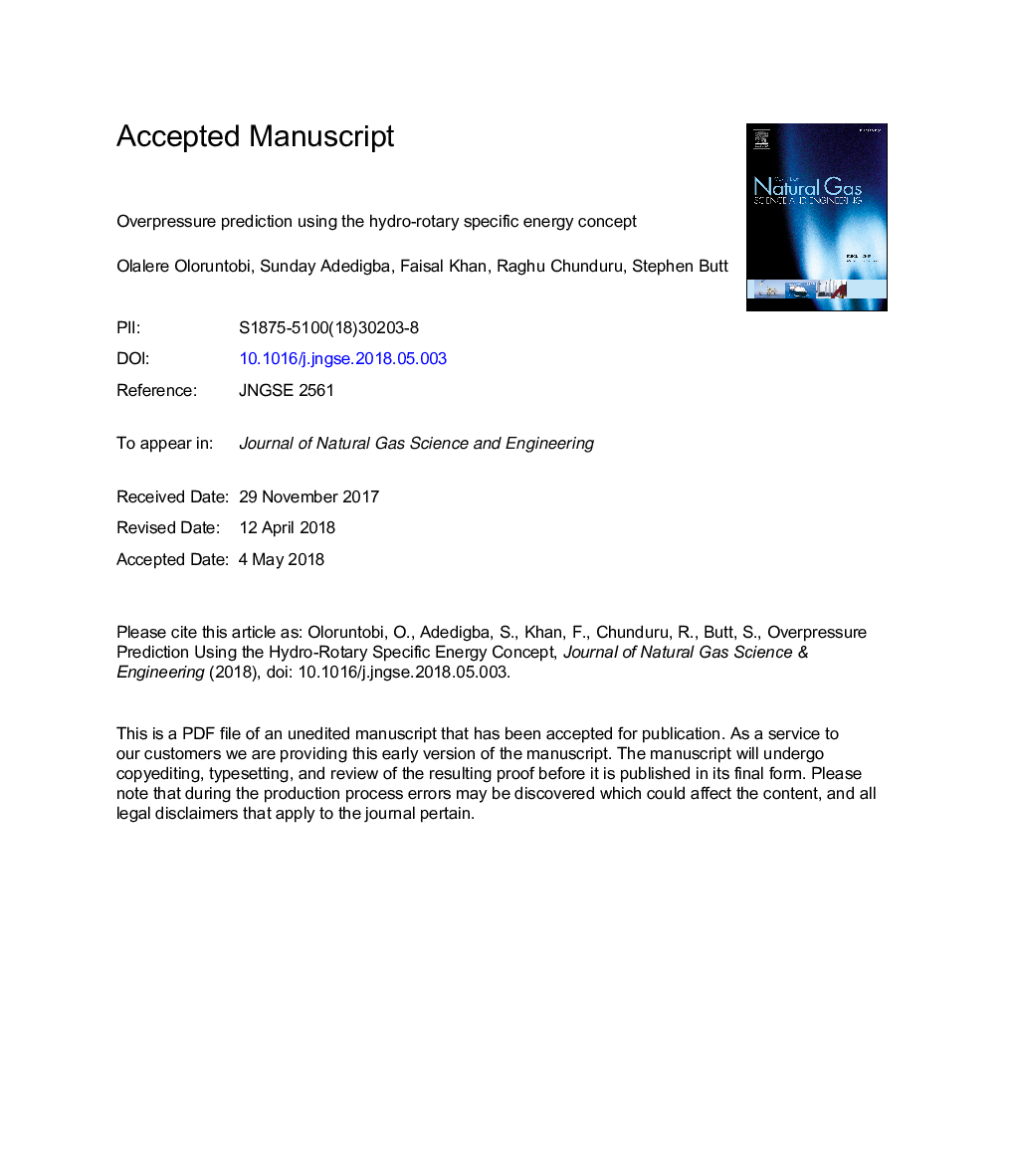| کد مقاله | کد نشریه | سال انتشار | مقاله انگلیسی | نسخه تمام متن |
|---|---|---|---|---|
| 8127971 | 1522988 | 2018 | 39 صفحه PDF | دانلود رایگان |
عنوان انگلیسی مقاله ISI
Overpressure prediction using the hydro-rotary specific energy concept
ترجمه فارسی عنوان
پیش بینی بیش از حد فشار با استفاده از مفهوم انرژی خاص آبرسانی
دانلود مقاله + سفارش ترجمه
دانلود مقاله ISI انگلیسی
رایگان برای ایرانیان
موضوعات مرتبط
مهندسی و علوم پایه
علوم زمین و سیارات
علوم زمین و سیاره ای (عمومی)
چکیده انگلیسی
Pore pressure predictions from the drilling parameters have experienced little improvement since the inception of the d-exponent concept. Applications of the d-exponent method to pore pressure predictions have produced mixed results, especially in deviated wells and under drilling conditions where bit hydraulic energy has significant influence on the rate of penetration (ROP). In this paper, a new energy-based pore pressure prediction technique using the concept of hydro-rotary specific energy (HRSE) is presented. The HRSE approximates the total energy required to break and remove a unit volume of rock. Overpressure prediction using the HRSE method is based on the principle that overpressure intervals with lower effective stress will require less energy to drill than the normally pressured intervals at the same depth. The new technique is tested using a recently drilled deep vertical exploratory gas well in the Tertiary Deltaic System in the central swamp region of the Niger Delta in Nigeria. The pore pressure estimates from the HRSE concept are compared to: (1) the pore pressure estimates derived from the d-exponent and shale compressional velocity, (2) the actual pore pressure measurements taken in the reservoir sands of interest. An excellent agreement is observed in magnitude and trend between the pore pressure estimates derived from the HRSE concept and the actual pore pressure measurements. This clearly demonstrates the applicability of the HRSE concept in predicting the onset of overpressure and estimating the formation pore pressure. The HRSE method of overpressure prediction has the potential to be more accurate in some drilling environments where the d-exponent method may have produced erroneous results.
ناشر
Database: Elsevier - ScienceDirect (ساینس دایرکت)
Journal: Journal of Natural Gas Science and Engineering - Volume 55, July 2018, Pages 243-253
Journal: Journal of Natural Gas Science and Engineering - Volume 55, July 2018, Pages 243-253
نویسندگان
Olalere Oloruntobi, Sunday Adedigba, Faisal Khan, Raghu Chunduru, Stephen Butt,
